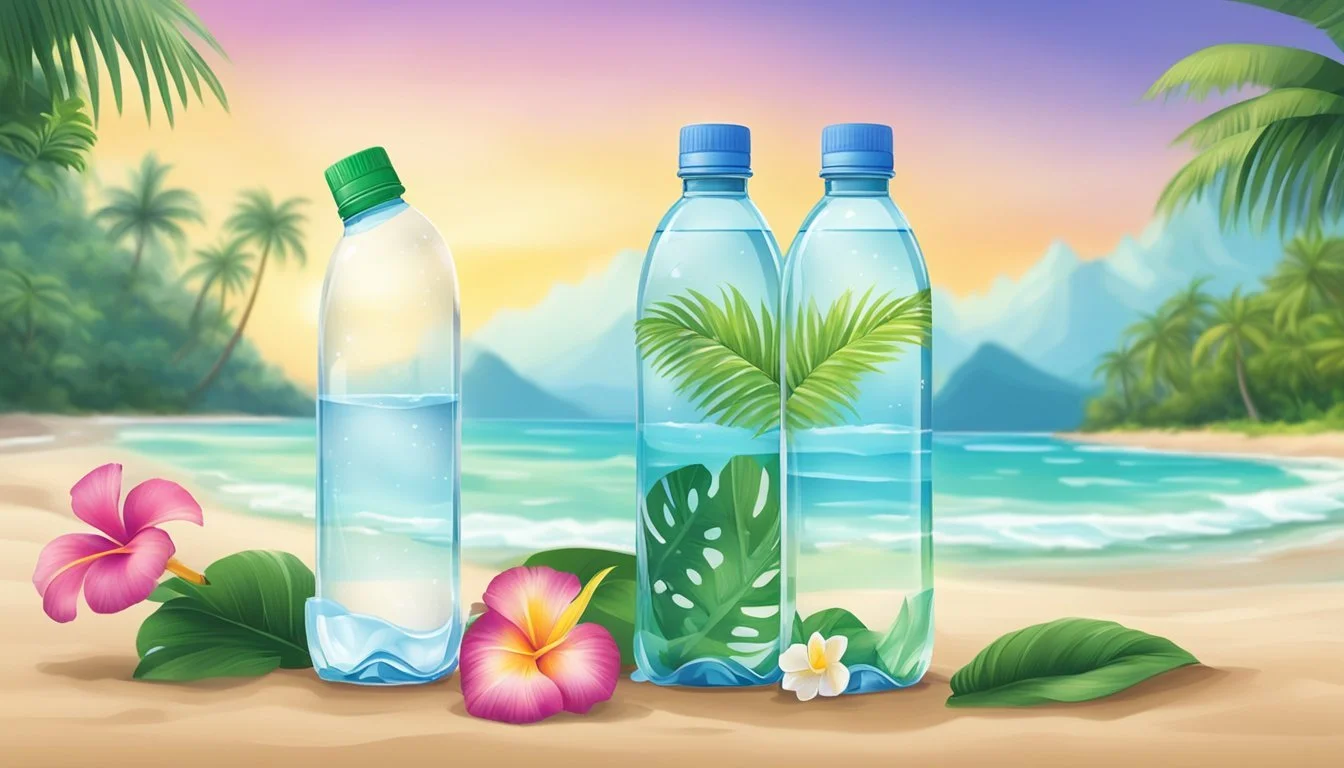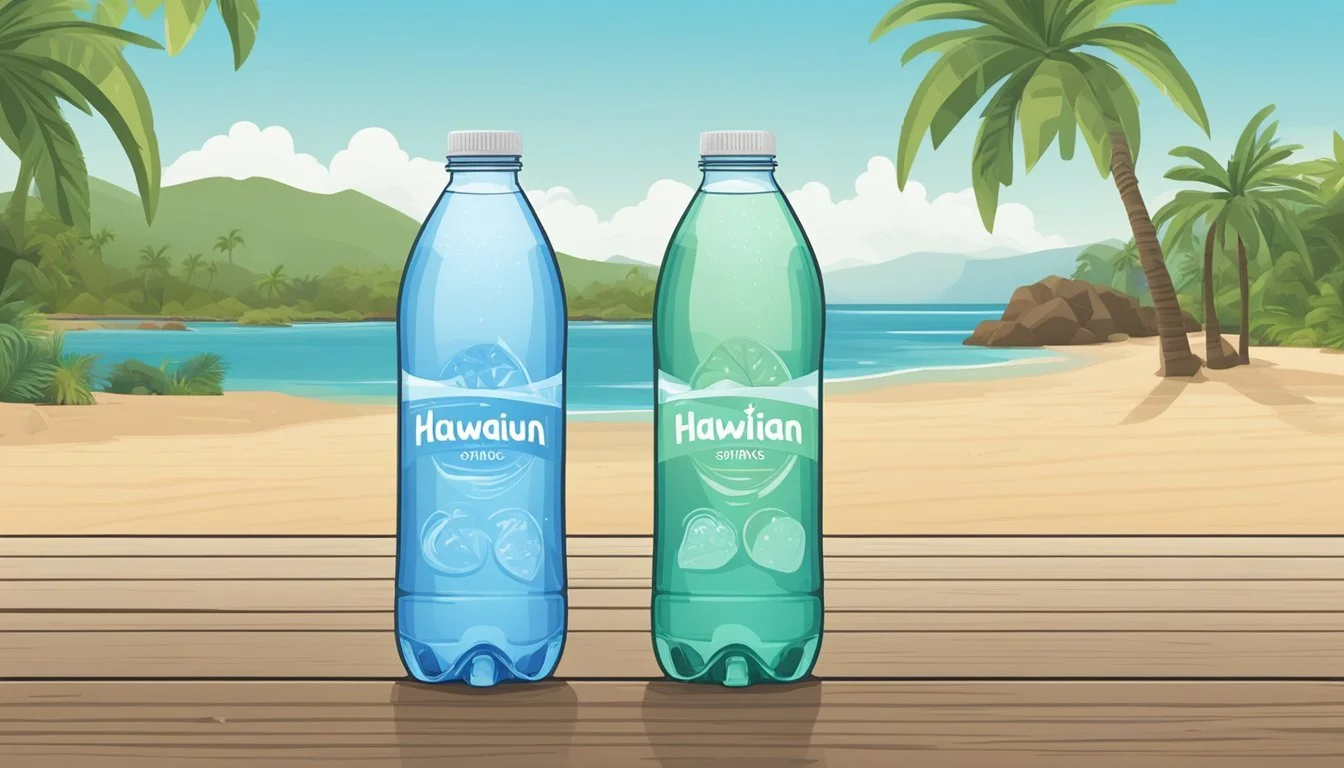Hawaiian Springs vs. Flow
Comparing Quality and Taste
When it comes to choosing the best bottled water, Hawaiian Springs and Flow offer distinct options that cater to different preferences. Hawaiian Springs boasts water sourced from Mauna Loa, giving it a naturally alkaline composition with a smooth taste influenced by volcanic filtration. In contrast, Flow prides itself on being an eco-friendly brand, packaging water with a natural alkaline pH in renewable cartons.
Both brands emphasize purity, but their unique characteristics set them apart. Hawaiian Springs is celebrated for its mineral content and refreshing taste derived from Hawaii's pristine environment. Flow, on the other hand, is known for its sustainable packaging and its commitment to environmental responsibility. Ultimately, the choice between Hawaiian Springs and Flow comes down to individual priorities: pristine, volcanic-filtered water versus a focus on sustainability and eco-friendly practices.
Exploring these differences helps consumers make informed decisions about the bottled water they prefer. Whether prioritizing taste, mineral content, or environmental impact, Hawaiian Springs and Flow present compelling options for discerning water drinkers.
Understanding Bottled Water
Bottled water is a multi-billion dollar industry that provides various types of water to meet consumer needs. This section examines the development of bottled water, its different types, and the regulations that ensure its quality and safety.
The Evolution of Bottled Water
The journey of bottled water began in the 1700s in Europe, when spas commercialized their water for its purported health benefits. Its popularity grew in the 19th century with advancements in glass bottle manufacturing.
By the 20th century, bottled water had become a widespread commodity. Technological improvements enhanced the purification process, making water accessible globally. Today, it competes with beverages like soda, often marketed for its health and hydration benefits.
Types of Bottled Water
Several types of bottled water cater to varying consumer preferences:
Spring Water: Sourced from natural springs, it contains natural minerals absorbed during filtration through underground rocks. Examples include Hawaiian Springs and Evian.
Mineral Water: This water contains a minimum of 250 parts per million of total dissolved solids from the source. It preserves minerals like calcium and magnesium.
Alkaline Water: Known for having a pH level higher than 7, it's believed to neutralize acid in the bloodstream and promote better hydration.
Natural Artesian Water: Collected from confined aquifers, this type is known for its purity and mineral content.
Electrolyte-Enhanced Water: Contains added minerals like potassium and sodium to improve hydration and performance.
Regulation and Standards
In the United States, the Food and Drug Administration (FDA) regulates bottled water as a food product. It enforces standards for identity, labeling, and quality.
Internationally, the International Bottled Water Association (IBWA) also ensures compliance with safety standards. Members must follow rigorous guidelines for bottling and distribution.
Quality control includes regular testing for contaminants, ensuring proper bottling practices and accurate labeling to maintain consumer trust and safety.
Analyzing Water Quality and Properties
When comparing Hawaiian Springs and Flow, it's essential to evaluate their water quality and properties, focusing on purity, pH levels, and the mineral content that promotes health benefits.
Purity and Contaminants
Hawaiian Springs boasts a clean, crisp profile, ensuring the removal of common impurities. Regular quality checks reveal minimal levels of bacteria and absent harmful contaminants, contributing to its reputation for purity.
Flow also commits to maintaining high purity standards. Tests show that Flow water is free from harmful pollutants and contaminants, offering peace of mind for health-conscious consumers.
Both brands utilize advanced filtration processes to achieve their purity. This involves ozone treatment and UV light disinfection, contributing to their clean and fresh taste. Ensuring this level of purity is critical for maintaining the trust and satisfaction of their consumers.
pH Level and Alkalinity
Hawaiian Springs water has a balanced pH level typically ranging from 7.3 to 7.7. This alkaline nature aids in neutralizing acidic waste in the body, promoting better health and hydration.
Flow water is marketed as slightly alkaline, with a pH level around 8.1. The higher alkalinity can help balance the body’s pH, potentially countering the effects of an acidic diet.
Both brands claim that their pH levels contribute to a smooth, refreshing taste. By maintaining these pH levels, both Hawaiian Springs and Flow aim to offer water that supports hydration and overall wellness.
Mineral Content and Health Benefits
Hawaiian Springs features a diverse mineral profile, including calcium, magnesium, and potassium. These electrolytes play a vital role in maintaining bodily functions such as muscle performance and heart health.
Flow is enriched with essential minerals such as magnesium, calcium, and bicarbonates. These contribute to the water’s unique health benefits, like supporting bone health and aiding digestion.
Below is a comparison of the mineral content:
Mineral Hawaiian Springs (mg/L) Flow (mg/L) Calcium 6.4 31 Magnesium 3.4 14 Potassium 2.3 2 Sodium 6.7 9
This mineral richness not only ensures hydration but also supports various physiological functions, making both Hawaiian Springs and Flow beneficial to regular consumption.
Hawaiian Springs and Flow: Brand Overview
Hawaiian Springs and Flow offer distinct choices in the bottled water market, each capitalizing on unique sources and qualities to appeal to their consumers.
Hawaiian Springs: An Introduction
Hawaiian Springs sources its natural artesian water from deep earth aquifers located within ancient lava rock formations on the Big Island of Hawaii. The water is drawn from an artesian well on the slopes of Mauna Loa, specifically in the District of Puna. This location is renowned for producing naturally alkaline water with a pH of 7.7+, providing a balanced mix of taste and essential minerals.
The company prides itself on bottling the water at the source to maintain freshness and purity. Hawaiian Springs uses fully recyclable containers, enhancing their sustainability efforts. They emphasize maintaining unparalleled quality and fostering a safe and rewarding work environment for their employees.
Flow: An Introduction
Flow offers alkaline spring water sourced from various natural springs in North America. Known for its plant-based packaging, Flow aims to minimize its environmental impact by using eco-friendly materials. The water boasts a pH of 8.1, making it naturally alkaline and free from industrial additives.
Flow markets itself on the purity and cleanliness of its sources, ensuring that the water remains untouched by human activities from source to bottle. This commitment to sustainability and quality resonates with environmentally conscious consumers who seek both health benefits and ecological responsibility.
Flow’s packaging not only supports environmental sustainability but also features eye-catching designs, which appeal to a younger demographic. The company has garnered a loyal following by balancing wellness trends with practical, eco-friendly solutions.
Source and Origin Comparison
Hawaiian Springs and Flow water brands both emphasize the purity and natural origins of their water. Each brand takes unique steps in sourcing and processing to ensure quality and taste.
Hawaiian Springs: Sourcing and Processing
Hawaiian Springs harvests its water from artesian aquifers located in Hawaii. These aquifers are known for their renewable nature. The aquifers are shielded by lava rock, which naturally filters the water.
Hawaiian Springs water is bottled at the source, ensuring that it retains a naturally alkaline pH of 7.7+. This method preserves the water’s minerals and taste. The brand uses fully recyclable containers, highlighting their commitment to sustainability.
The water undergoes minimal processing to maintain its natural characteristics. UV light treatment ensures purity, making it both refreshing and safe to drink.
Flow: Sourcing and Processing
Flow sources its water from a natural spring in Verona, Virginia. The water flows through limestone deposits, which act as natural filters. This process contributes to the water’s purity and alkaline nature, boasting a stable pH.
Flow water is treated with UV light before bottling to guarantee cleanliness. The brand emphasizes minimal processing, retaining natural minerals and electrolytes essential for health. The water is then bottled at the source, ensuring freshness.
Flow uses eco-friendly packaging options, including fully recyclable paperboard containers, to reduce environmental impact. This approach aligns with their sustainability ethos, offering a pure and eco-conscious choice.
Taste Profile and Consumer Preferences
Hawaiian Springs and Flow both offer distinct tastes that have garnered varied consumer reactions. This section will explore their unique taste profiles and what consumers have to say about each brand.
Defining a Crisp, Clean Taste
Hawaiian Springs water is often praised for its crisp and refreshing taste. It originates from the Kea’au aquifer on the island of Hawaii, which imbues the water with natural minerals. These minerals contribute to a subtly sweet flavor and a smooth finish, making hydration an enjoyable experience.
Flow water, on the other hand, is known for its alkaline properties and electrolyte content. Sourced from an artesian spring, Flow boasts a balanced pH level that some claim enhances its clean, crisp taste. The water’s minerals, such as calcium, magnesium, and potassium, offer a slightly different flavor profile, which adds a layer of complexity to the refreshing taste.
Consumer Reports and Reviews
Consumer reactions to both brands vary. According to various reviews and rankings, Hawaiian Springs is favored for its natural taste and smooth aftertaste, making it a popular choice for those seeking pure hydration.
Flow’s consumers appreciate the health benefits linked to its higher pH level and naturally occurring electrolytes. The brand’s commitment to sustainable packaging also appeals to environmentally conscious consumers. In blind taste tests, Flow is often ranked favorably, though some consumers may describe its taste as slightly different from typical spring water due to its alkaline properties.
In comparisons, Gatorade drinkers looking for an everyday hydration solution may favor Flow due to its electrolyte content, whereas those emphasizing natural, unaltered water may lean towards Hawaiian Springs. Both brands have their unique strengths, fulfilling different consumer needs in terms of taste and health benefits.
More About Hawaiian Springs
Acqua Pana vs Hawaiian Springs: Which Bottled Water is Better?
Aqua Carpatica vs Hawaiian Springs: Which Bottled Water is Better?
Aquafina vs Hawaiian Springs: Which Bottled Water is Better?
Arrowhead vs Hawaiian Springs: Which Bottled Water is Better?
Boxed Water vs Hawaiian Springs: Which Bottled Water is Better?
Castle Rock vs Hawaiian Springs: Which Bottled Water is Better?
Core Hydration vs Hawaiian Springs: Which Bottled Water is Better?
Deer Park vs Hawaiian Springs: Which Bottled Water is Better?
Essentia vs Hawaiian Springs: Which Bottled Water is Better?
Hawaiian Springs vs 1907water: Which Bottled Water is Better?
Hawaiian Springs vs 7-Select: Which Bottled Water is Better?
Hawaiian Springs vs Alkaline88: Which Bottled Water is Better?
Hawaiian Springs vs Antipodes: Which Bottled Water is Better?
Hawaiian Springs vs Big Chill: Which Bottled Water is Better?
Hawaiian Springs vs BodyArmor: Which Bottled Water is Better?
Hawaiian Springs vs Cascade Mountain: Which Bottled Water is Better?
Hawaiian Springs vs CBD Living: Which Bottled Water is Better?
Hawaiian Springs vs Crystal Geyser: Which Bottled Water is Better?
Hawaiian Springs vs Crystal Lake: Which Bottled Water is Better?
Hawaiian Springs vs Essence pH10: Which Bottled Water is Better?
Hawaiian Springs vs Hawaii Volcanic: Which Bottled Water is Better?
Hawaiian Springs vs Kirkland Signature: Which Bottled Water is Better?
Hawaiian Springs vs Liquid Death: Which Bottled Water is Better?
Hawaiian Springs vs Mananalu: Which Bottled Water is Better?
Hawaiian Springs vs Open Water: Which Bottled Water is Better?
Hawaiian Springs vs Proud Source: Which Bottled Water is Better?
Hawaiian Springs vs Pure Life: Which Bottled Water is Better?
Hawaiian Springs vs Purely Sedona: Which Bottled Water is Better?
Hawaiian Springs vs Refreshe: Which Bottled Water is Better?
Hawaiian Springs vs Richard's Rainwater: Which Bottled Water is Better?
Hawaiian Springs vs Simple Truth: Which Bottled Water is Better?
Hawaiian Springs vs Solan de Cabras: Which Bottled Water is Better?
Hawaiian Springs vs Talking Rain AQA: Which Bottled Water is Better?
Hawaiian Springs vs The Well: Which Bottled Water is Better?
Hawaiian Springs vs Tru Alka: Which Bottled Water is Better?
Hawaiian Springs vs Weird Water: Which Bottled Water is Better?
Hawaiian Springs vs Whole Foods 365: Which Bottled Water is Better?
Hawaiian Springs vs Whole Foods Italian Still Mineral water: Which Bottled Water is Better?
Ice Mountain vs Hawaiian Springs: Which Bottled Water is Better?
Icelandic Glacial vs Hawaiian Springs: Which Bottled Water is Better?
Just Water vs Hawaiian Springs: Which Bottled Water is Better?
Mountain Valley Spring Water vs Hawaiian Springs: Which Bottled Water is Better?
Nestle Pure Life vs Hawaiian Springs: Which Bottled Water is Better?
Poland Spring vs Hawaiian Springs: Which Bottled Water is Better?
San Pellegrino vs Hawaiian Springs: Which Bottled Water is Better?
Smartwater vs Hawaiian Springs: Which Bottled Water is Better?
Topo Chico vs Hawaiian Springs: Which Bottled Water is Better?
Zephyrhills vs Hawaiian Springs: Which Bottled Water is Better?





